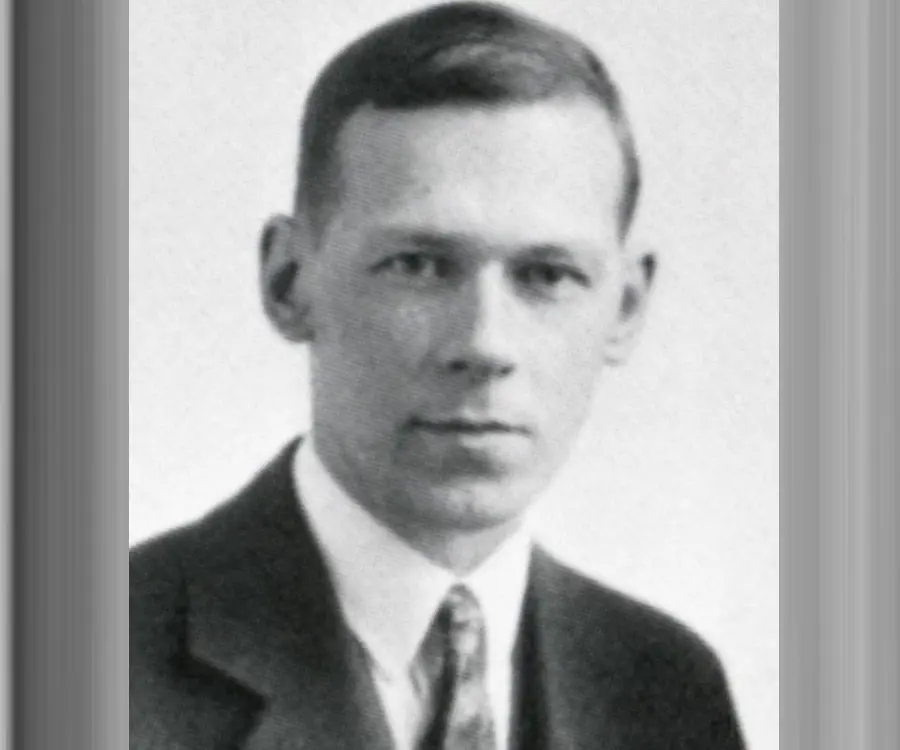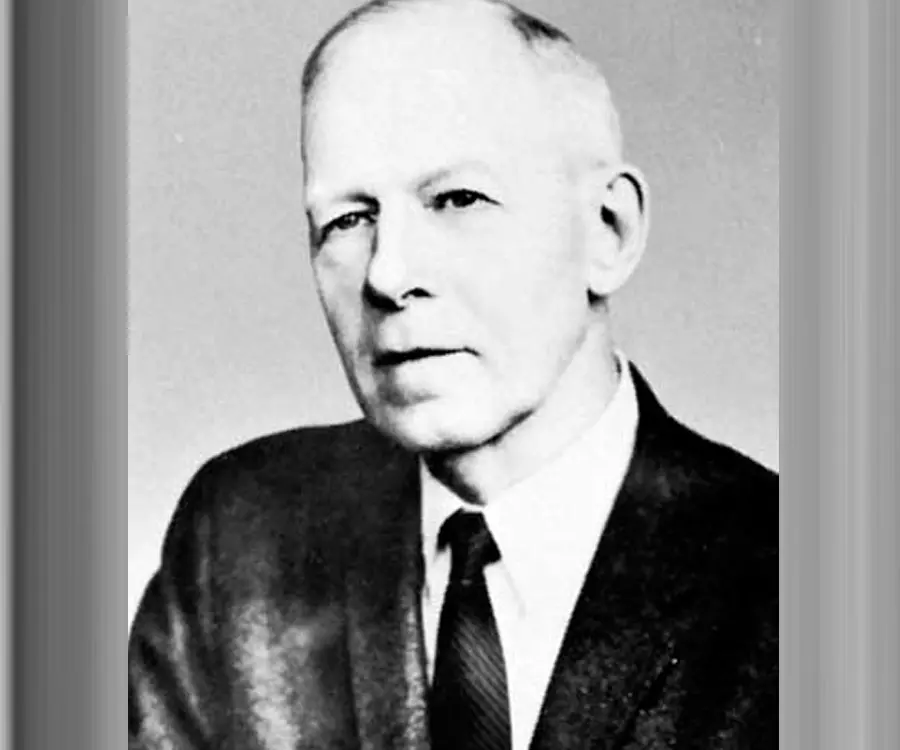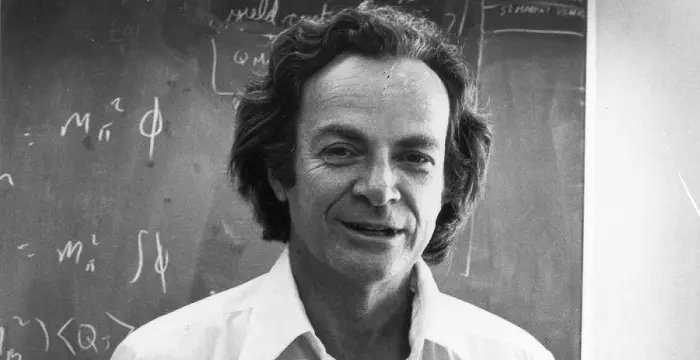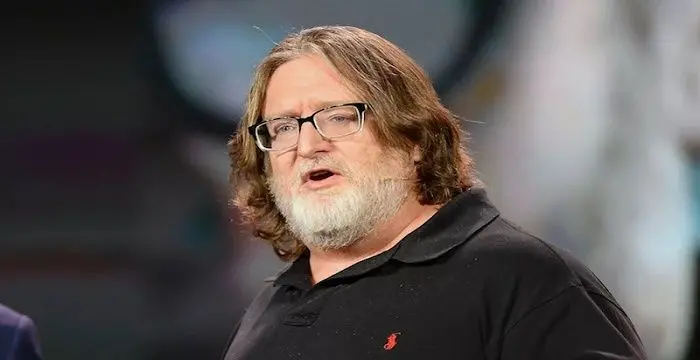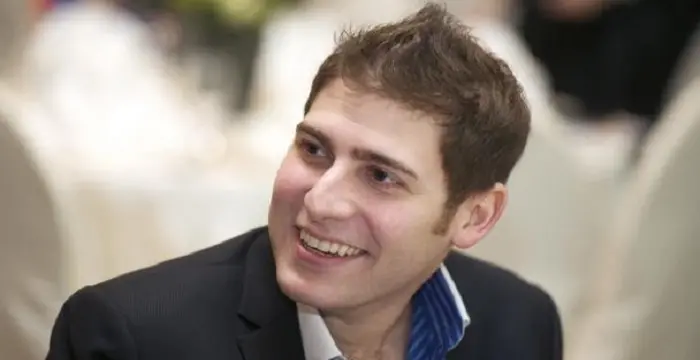
Robert S. Mulliken - Physicists, Birthday and Family
Robert S. Mulliken's Personal Details
Robert Sanderson Mulliken was an American physicist and chemist who received the Nobel Prize for Chemistry in 1966 for his work on the structure of molecules
| Information | Detail |
|---|---|
| Birthday | June 7, 1896 |
| Died on | October 31, 1986 |
| Nationality | American |
| Famous | Massachusetts Institute Of Technology, University Of Chicago, Scientists, Physicists, Chemists |
| Spouses | Mary Helen Von Noe |
| Known as | Robert Sanderson Mulliken |
| Universities |
|
| Notable Alumnis |
|
| Birth Place | Newburyport, Massachusetts, US |
| Gender | Male |
| Father | Samuel Parsons Mulliken |
| Mother | Katherine W. Mulliken |
| Sun Sign | Gemini |
| Born in | Newburyport, Massachusetts, US |
| Famous as | Chemist, Physicist |
| Died at Age | 90 |
// Famous Physicists
Henry Cavendish
Henry Cavendish was a theoretical chemist and physicist, renowned for discovery of hydrogen and calculation of the mass of earth. To know more about his childhood, profile, timeline and career read on
Walter Kohn
Nobel Laureate Walter Kohn was an Austrian-born American theoretical chemist and physicist. Check out this biography to know about his childhood, life, achievements, works & timeline.
Nikola Tesla
Nikola Tesla was a Serbian-American inventor, best known for his development of alternating current electrical systems. This biography of Nikola Tesla provides detailed information about his childhood, life, achievements, works & timeline.
Robert S. Mulliken's photo
Who is Robert S. Mulliken?
Robert Sanderson Mulliken was an American physicist and chemist who received the Nobel Prize for Chemistry in 1966 for his work on the structure of molecules. Starting to work on the theory of molecular structures from 1920, Mulliken devoted his entire life to electron and quantum theory and was primarily responsible for the development of ‘Molecular Orbital Theory’, a method of computing the structure of molecules. He was affectionately called as ‘Mr. Molecule’. Mulliken along with Linus Pauling is credited to be the founder of Theoretical Quantum Chemistry. He was instrumental in developing the basic concepts of molecular structure and thereby bringing forth its terminology and spectra. His area of work covered two major scientific disciplines and that was the reason he alternated between physics and chemistry. Thus he has carved the niche for also bringing in the contributions of mathematics and computers into his study. His field of expertise was so complex that when Mulliken received the Nobel Prize, he did not even attempt to explain his work in layman terms to the audience. He has also contributed to develop the atomic bomb during the World War II.
// Famous Massachusetts Institute Of Technology
Dolph Lundgren
Dolph Lundgren is a famous Swedish actor, film-maker, screenwriter and martial artist. This biography offers detailed information about his childhood, family, personal life, etc.
Joseph E. Stiglitz
Joseph E. Stiglitz is a Nobel Prize winning American economist. Check out this biography to know about his childhood, family life, achievements and other facts related to his life.
Richard Feynman
Richard Feynman was a Nobel Prize winning American physicist who proposed the theory of quantum electrodynamics. To know more about his childhood, career, profile and timeline read on
Childhood & Early Life
Robert Mulliken was born in Newburyport, Massachusetts on June 7, 1896 to Samuel Parsons Mulliken and Katherine W. Mulliken. Samuel Mulliken was a professor of Organic Chemistry at the Massachusetts Institute of Technology (MIT).
He assisted his father in editorial work of his four volume text book on ‘Organic Compound Identification’ and eventually became a master of the nomenclature of organic chemistry.
As a child, Mulliken had a brilliant as well as a selective memory. For instance, he mastered the botanical name of plants, but couldn’t remember his most favorite German high school teacher.
Mulliken graduated from school in 1913 and received a scholarship to join the MIT which his father had also received, during his education. Like his father, he also took up majors in chemistry. He received his B.S degree in chemistry from MIT in 1917.
Career
In 1917, the United States had just entered the World War I and Mulliken got a wartime job as a Junior Chemical Engineer and worked for the United States Bureau of Mines. He also conducted research on poisonous gases at the American University, Washington D.C at that time.
After World War I ended in 1918, Mulliken worked as a Chemist at the New Jersey Zinc Company for a year.
He realized that it was not what he wanted to do and quit the job to pursue a PhD at the University of Chicago in 1919.
He obtained his doctorate in 1921 for his research on separation of isotopes of the molecules of Mercury by evaporation. He continued with his isotope research until he attended a course conducted by Nobel laureate physicist Robert A. Millikan, which kick started his interest in Quantum theory.
In 1925, Mulliken travelled to Europe and worked on Quantum Mechanics with outstanding scientists of the time such as Erwin Schrodinger, Max Born, Werner Heisenberg and others for the next two years.
From 1926, he taught Physics at the New York University for the next three years. This was his first recognition as a physicist though he majored in chemistry.
In 1929, he again moved to University of Chicago as an Associate Professor of Physics and later in 1931 became a Professor. He continued his research on Molecular orbital theory and gradually refined it.
In 1936, he became a member of the National Academy of Sciences. He was the youngest member in the history of the organization at that time.
Major Works
In 1927, Mulliken worked with Friedrich Hund and developed the Hund-Mulliken theory.
He was also responsible for developing the ‘Mulliken Population Analysis’, a method of assigning charges to atoms in a molecule.
In 1934, he devised a method for estimating the electro negativity of elements. It was not as popular as Pauling electro negativity which can be found in textbooks, but considered to be a better indicator of the electro negativity property by experts.
During the World War II (from 1942 to 1945), he collaborated in the Manhattan project and was appointed as the Director of Information Division for the Plutonium Project at the University of Chicago.
Awards & Achievements
In 1966, Mulliken received the Nobel Prize in Chemistry for his work on ‘fundamental work concerning chemical bonds and the electronic structure of molecules by the molecular orbital method’
In 1983, he received the Priestly medal by the American Chemical Society (ACS), which is the society’s highest honor awarded for distinguished service in chemistry.
Mulliken also received numerous awards and honors from several universities across the world.
Personal life & Legacy
He married Mary Helen Von Noe on December 24, 1929. They have two daughters. Mulliken’s wife Helen died in 1975.
Mulliken died due to a cardiac arrest at his daughter’s home in Arlington, Virginia on October 31, 1986.
He is survived by his daughter Lucia Maria, two grand children and two great grand children.
// Famous University Of Chicago
Satya Nadella
Satya Nadella is the current CEO of Microsoft. This biography provides detailed information about his childhood, profile, career, net worth & timeline
Emily Greene Balch
Emily Greene Balch was an American economist, sociologist and pacifist who won the 1946 Nobel Peace Prize. This biography of Emily Greene Balch provides detailed information about her childhood, life, achievements, works & timeline.
Susan Sontag
Susan Sontag is an American critical essayist, cultural analyst, novelist, political activist, filmmaker and playwright of international repute. Read on to find out more about her childhood, career, profile and timeline.
Robert S. Mulliken's awards
| Year | Name | Award |
|---|---|---|
Other | ||
| 0 | Peter Debye Award (1963) | |
| 0 | Nobel Prize for chemistry (1966) | |
| 0 | ForMemRS (1967) | |
| 0 | Priestley Medal (1983) | |
Robert S. Mulliken biography timelines
- // 7th Jun 1896Robert Mulliken was born in Newburyport, Massachusetts on June 7, 1896 to Samuel Parsons Mulliken and Katherine W. Mulliken. Samuel Mulliken was a professor of Organic Chemistry at the Massachusetts Institute of Technology (MIT).
- // 1913 To 1917Mulliken graduated from school in 1913 and received a scholarship to join the MIT which his father had also received, during his education. Like his father, he also took up majors in chemistry. He received his B.S degree in chemistry from MIT in 1917.
- // 1917In 1917, the United States had just entered the World War I and Mulliken got a wartime job as a Junior Chemical Engineer and worked for the United States Bureau of Mines. He also conducted research on poisonous gases at the American University, Washington D.C at that time.
- // 1918After World War I ended in 1918, Mulliken worked as a Chemist at the New Jersey Zinc Company for a year.
- // 1919He realized that it was not what he wanted to do and quit the job to pursue a PhD at the University of Chicago in 1919.
- // 1921He obtained his doctorate in 1921 for his research on separation of isotopes of the molecules of Mercury by evaporation. He continued with his isotope research until he attended a course conducted by Nobel laureate physicist Robert A. Millikan, which kick started his interest in Quantum theory.
- // 1925In 1925, Mulliken travelled to Europe and worked on Quantum Mechanics with outstanding scientists of the time such as Erwin Schrodinger, Max Born, Werner Heisenberg and others for the next two years.
- // 1926From 1926, he taught Physics at the New York University for the next three years. This was his first recognition as a physicist though he majored in chemistry.
- // 1927In 1927, Mulliken worked with Friedrich Hund and developed the Hund-Mulliken theory.
- // 1929 To 1931In 1929, he again moved to University of Chicago as an Associate Professor of Physics and later in 1931 became a Professor. He continued his research on Molecular orbital theory and gradually refined it.
- // 24th Dec 1929 To 1975He married Mary Helen Von Noe on December 24, 1929. They have two daughters. Mulliken’s wife Helen died in 1975.
- // 1934In 1934, he devised a method for estimating the electro negativity of elements. It was not as popular as Pauling electro negativity which can be found in textbooks, but considered to be a better indicator of the electro negativity property by experts.
- // 1936In 1936, he became a member of the National Academy of Sciences. He was the youngest member in the history of the organization at that time.
- // 1942 To 1945During the World War II (from 1942 to 1945), he collaborated in the Manhattan project and was appointed as the Director of Information Division for the Plutonium Project at the University of Chicago.
- // 1966In 1966, Mulliken received the Nobel Prize in Chemistry for his work on ‘fundamental work concerning chemical bonds and the electronic structure of molecules by the molecular orbital method’
- // 1983In 1983, he received the Priestly medal by the American Chemical Society (ACS), which is the society’s highest honor awarded for distinguished service in chemistry.
- // 31st Oct 1986Mulliken died due to a cardiac arrest at his daughter’s home in Arlington, Virginia on October 31, 1986.
// Famous Scientists
Juliane Koepcke
Juliane Koepcke is a German-Peruvian biologist, who was the lone survivor among the 92 passengers and crew of the ill-fated LANSA Flight 508 that crashed in the Peruvian rainforest on 24 December 1971. Know more about her life in this biography.
Henry Cavendish
Henry Cavendish was a theoretical chemist and physicist, renowned for discovery of hydrogen and calculation of the mass of earth. To know more about his childhood, profile, timeline and career read on
Konstantin Tsiolkovsky
Konstantin Tsiolkovsky was a Russian rocket scientist and a pioneer of astronautics. This biography provides detailed information about his childhood, family, personal life, career, achievements, etc.
Gabe Newell
Gabe Newell is an American computer programmer and businessman, best known as the co-founder of ‘Valve Corporation.’ This biography provides detailed information about his childhood, family, personal life, career, etc.
Grigori Perelman
Grigori Perelman is a Russian mathematician who is best known for his contributions to Riemannian geometry and geometric topology. Check out this biography to know about his childhood, family life, achievements and fun facts about him.
Eduardo Saverin
Eduardo Luiz Saverin is a Brazilian internet entrepreneur and investor. This biography profiles his childhood, life, career, achievements, and timeline
Robert S. Mulliken's FAQ
What is Robert S. Mulliken birthday?
Robert S. Mulliken was born at 1896-06-07
When was Robert S. Mulliken died?
Robert S. Mulliken was died at 1986-10-31
Where was Robert S. Mulliken died?
Robert S. Mulliken was died in Arlington, Virginia, US
Which age was Robert S. Mulliken died?
Robert S. Mulliken was died at age 90
Where is Robert S. Mulliken's birth place?
Robert S. Mulliken was born in Newburyport, Massachusetts, US
What is Robert S. Mulliken nationalities?
Robert S. Mulliken's nationalities is American
Who is Robert S. Mulliken spouses?
Robert S. Mulliken's spouses is Mary Helen Von Noe
What was Robert S. Mulliken universities?
Robert S. Mulliken studied at Massachusetts Institute Of Technology (MIT),University Of Chicago, MIT, University of Chicago
What was Robert S. Mulliken notable alumnis?
Robert S. Mulliken's notable alumnis is Massachusetts Institute Of Technology (MIT), University Of Chicago
Who is Robert S. Mulliken's father?
Robert S. Mulliken's father is Samuel Parsons Mulliken
Who is Robert S. Mulliken's mother?
Robert S. Mulliken's mother is Katherine W. Mulliken
What is Robert S. Mulliken's sun sign?
Robert S. Mulliken is Gemini
How famous is Robert S. Mulliken?
Robert S. Mulliken is famouse as Chemist, Physicist



